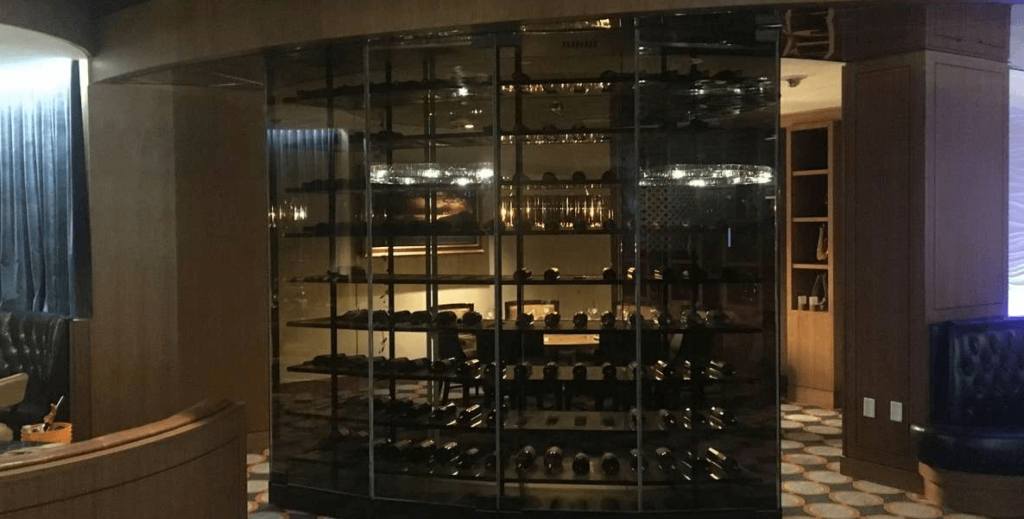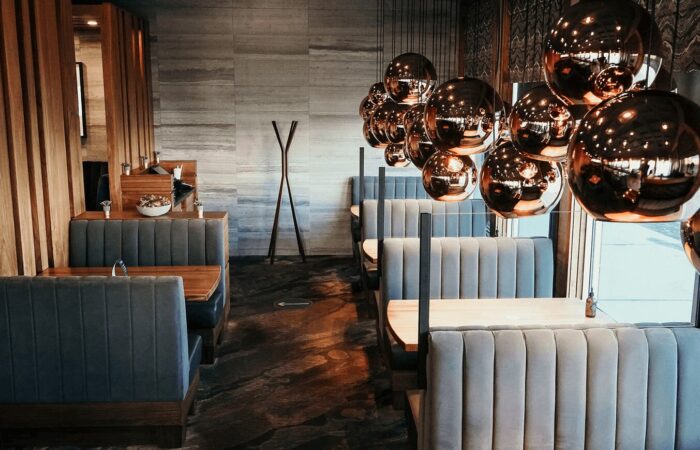
Everything You Need to Know About Glass Wine Rooms
In the realm of home design, one trend is captivating the hearts of wine connoisseurs and aesthetic enthusiasts alike – the glass wine room. This burgeoning trend elegantly marries form and function, creating a visually stunning space to store and showcase your prized wine collection. Glass wine rooms seamlessly blend into the home environment, reflecting the owner’s taste and love for viniculture. Beyond their apparent beauty, these rooms are meticulously designed to ensure the optimal conditions for wine storage. Let’s uncork the world of glass wine rooms and pour out the essentials you need to know about this rising trend.
Understanding Glass Wine Rooms
A glass wine room is a dedicated residence space mainly constructed from glass for storing and displaying wine. This isn’t merely a traditional wine cellar with a glass door; it’s an architectural feature that integrates the beauty of wine storage into the livable spaces of a home.
There are many benefits of having a glass wine room in a residence. From a functional standpoint, these installations create optimal conditions for wine preservation, ensuring that each bottle matures perfectly. Architecturally, they add a new dimension to the interior design, offering a visual feast of neatly arranged wine bottles behind clear glass. Moreover, these rooms are customized to reflect the homeowner’s unique style and wine preference, expressing individual personality and passion.
In essence, a glass wine room is not just about wine storage—it’s about creating a space that tells a story, stirs conversation, and heightens the appreciation for the art of winemaking and collecting.
Design Considerations for Glass Wine Rooms
Space and location within your home are crucial factors when considering the installation of a glass wine room. The room must be large enough to store your wine collection and accommodate future additions. Ideal locations for a wine room may include a basement, an unused closet, under-stairs spaces, or a spare room, all providing the seclusion necessary for optimal wine preservation.
Design styles and themes for glass wine rooms are as varied as the wines they house. A modern and minimalist aesthetic might employ sleek lines and a monochromatic colour palette, while a rustic design could incorporate reclaimed wood and antique wine accessories. For those with traditional homes, consider a design that features classic wine country elements such as stone, wood, and wrought iron. Alternatively, those seeking a more eclectic vibe might opt for a mix of old-world charm and contemporary design elements.
Material Selection for Glass Wine Rooms
When selecting materials for your glass wine room, there are vital factors to consider:
- Glass Type: Opt for insulated glass to maintain optimal temperature and humidity levels. UV-protective glass can also protect your wine from harmful sunlight.
- Racking Material: Wood and metal are commonly used in wine racks. While wood provides a traditional, warm aesthetic, metal racks offer a sleek, modern appeal.
- Flooring: The flooring should withstand a cool, humid environment. Tile, marble, or stained concrete are durable options.
- Lighting: LED lights can enhance the visual appeal without emitting heat that could harm the wine.
- Climate Control Systems: Consider installing a dedicated wine cellar cooling system to sustain the right temperature and humidity.
- Door: An airtight, insulated door is recommended to maintain the correct conditions in the room.
Remember, the materials you choose should not only support the functionality of your wine room but also align with your design aesthetics.
Different Types of Glass and Their Benefits
Several types of glass could be considered for your glass wine room, each with its own set of benefits:
- Insulated Glass: This type of glass is perfect for maintaining a constant temperature and humidity level in your wine room, which is vital for preserving wine. Insulated glass has at least two panes separated by a gas-filled space, providing excellent insulation and preventing temperature fluctuations.
- UV-Protective Glass: It blocks harmful ultraviolet rays that can prematurely age wine and deteriorate its flavour. This glass is crucial if your wine room will be exposed to natural light.
- Tempered Glass: Tempered glass is strengthened through heating and rapid cooling, making it four times stronger than regular glass. This type of glass is ideal for a wine room due to its enhanced safety features – if broken, it crumbles into small, less harmful pieces.
- Laminated Glass: This type of safety glass holds together when shattered. In the event of breaking, it is held in place by an interlayer, typically of polyvinyl butyral (PVB), between its two or more layers of glass. This is ideal for wine rooms as it adds extra protection and insulation.
- Low-E Glass: Low-emissivity (Low-E) glass has a microscopically thin, transparent coating that reflects long-wave infrared energy or heat. This makes it a good option for a wine room as it helps maintain a consistent temperature, even near windows or doors that receive sunlight.
- Tinted Glass: Tinted glass, as the name suggests, has a tint that reduces glare and absorbs heat. This provides privacy for your wine room, and the reduced light transmission can help maintain the quality of your wines.
Each type of glass has unique characteristics and offers specific benefits; your choice will largely depend on your requirements and aesthetic preferences for your glass wine room.
Customization Options for Glass Wine Rooms

When designing a glass wine room, there are numerous ways to customize the space to reflect your taste and style.
- Lighting: Lighting significantly impacts the ambiance of your wine room. Backlit shelves, spotlighting for feature bottles, or even a chandelier can infuse the space with warmth and drama. LED lights are a popular choice as they do not emit heat that could harm the wine. Consider dimmable lights for versatility and mood setting.
- Shelving: Wine racks come in a variety of materials and designs. From rustic wood to modern metal, these can be chosen to reflect your aesthetic. Consider a mix of horizontal and vertical racking for visual interest, or incorporate display shelves for showcasing special bottles. Your design should also consider the functional aspect of storing different bottle sizes.
- Artistic Elements: Artistic elements can add a personal touch to your glass wine room. These might include wall art, sculptures, unique wine accessories, or custom bottle labels. If you have a particular theme, these elements can be curated to enhance that theme.
- Colour Scheme and Texture: These play a substantial role in setting the tone for the room. A monochromatic scheme or neutral tones can allow the wine collection to take center stage. Alternatively, bold colours or textured finishes can add depth and visual appeal.
Remember, the customization of your glass wine room should reflect your passion for wine and your style. The end goal is to create a space that is not only functional but uniquely yours.
Climate Control and Storage in Glass Wine Rooms
Maintaining proper temperature and humidity is crucial for wine preservation. Wine is a delicate product that responds poorly to extreme conditions or fluctuations in temperature and humidity. Typically, wine should be stored at a temperature of between 7°C(45°F ) and 18°C(65°F), with the most commonly agreed upon temperature being 13°C(55°F). Humidity levels should ideally be kept at around 70% to prevent the cork from drying out and the wine from oxidizing.
Wine room climate control is often achieved through specially designed wine cellar cooling systems. These systems are designed to maintain a steady temperature and humidity regardless of external weather conditions. They come in various sizes and configurations, from self-contained and split systems to fully ducted systems, allowing flexibility in installation depending on your wine room’s design and size.
Innovative and practical storage solutions can enhance the functionality of your wine room. For extensive collections, a storage system with different temperature zones can allow optimal storage conditions for different types of wine. Modular racks, rotating racks, or pull-out drawers can optimize space and provide easy access. Adjustable shelving can accommodate different bottle sizes for those with a mix of standard and larger formats. Remember also to consider including a high-quality wine inventory system to track your collection and manage aging. Combining a well-designed storage system with effective climate control will ensure your wine is stored in optimal conditions, preserving its quality for your future enjoyment.
Installation Process of a Glass Wine Room
The installation process for a glass wine room requires meticulous planning. Here’s a breakdown of the recommended steps:
- Site Preparation: The location chosen for the wine room should be prepared in advance. It should be cleared of any furniture or obstructions to facilitate easy movement and installation. Ensure the space is clean and any necessary construction work is completed before the installation begins.
- Design Finalisation: Reconfirm the design specifications, including measurements, type of glass, shelving design, and placement of the cooling system. Any last-minute changes at this point could delay the installation process.
- Installing the Cooling System: The cooling system should be installed first to ensure that temperature and humidity levels can be controlled once the room is sealed.
- Constructing the Glass Walls and Door: The glass panels are carefully placed and secured according to the design. The door is installed with special attention to sealing to prevent cool air leakage.
- Setting up the Shelving: Once the room’s structure is in place, the shelving is installed per the design. This should be done carefully to prevent any damage to the glass walls.
- Lighting Installation: The lighting fixtures are then installed and tested to ensure they function correctly and do not emit heat.
- Final Inspection: A final inspection is conducted to ensure that everything has been installed correctly and that the cooling system maintains the desired temperature and humidity levels.
Maintenance and Care of Glass Wine Rooms
Proper maintenance and care of your glass wine room are essential to ensure its longevity and preserve the quality of your wine collection. Here are some tips on how to clean and maintain your wine room:
- Glass Cleaning: Regularly clean the glass panels and door with a mild, non-ammonia-based cleaner to avoid damaging the glass. Use a soft, lint-free cloth for wiping to prevent scratches. Remember to clean both inside and outside surfaces.
- Shelving Cleaning: The shelving should be cleaned periodically to remove dust build-up. Use a soft cloth and a mild cleaner suitable for the material on the shelves (wood, metal, etc.).
- Cooling System Maintenance: The cooling system is a critical component of the wine room. Its maintenance includes regular cleaning of filters, checking for leaks, and ensuring the system is running at the correct temperature and humidity. It’s advisable to have a professional conduct an annual check-up of the system.
- Lighting Check: Regularly check the lighting fixtures for failures or heat emissions. Remember that excessive heat can damage your wines.
- Humidity Check: Keep an eye on the room’s humidity level. Too low humidity can dry out the corks, and too high can lead to mould growth.
These are standard maintenance tasks for a glass wine room. However, each wine room is unique, so your maintenance routine may vary based on your specific design and materials. Be sure to consult with your wine room installer or a wine storage professional for more specific guidance on maintaining your particular wine room.
Conclusion
A glass wine room is not just an addition to your home but an exquisite blend of elegance and functionality. It provides optimal conditions for preserving your precious wine collection, while its transparent nature lets you showcase it in style. Besides its practicality, a glass wine room also serves as a focal point of interior design, adding a touch of sophistication to your living space. So, if you’re a wine lover who appreciates aesthetics and quality, consider installing a glass wine room in your home. It’s an investment that will enhance your wine connoisseurship while offering a unique, stylish element to your home design.
At Red Seal Glass, we understand that each wine lover’s needs are unique, and our team is prepared to cater to your specific visions. Offering a wealth of expertise and an array of custom solutions, we are committed to providing the highest quality experience. Contact us for a consultation to discuss your ideas and requirements.

